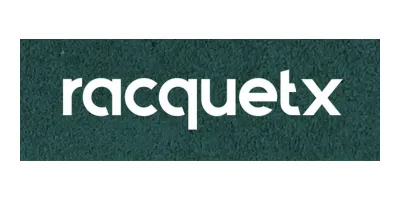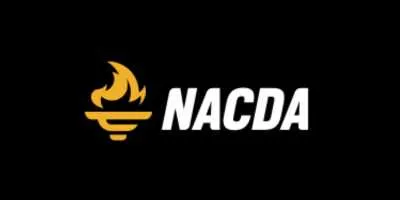Home » Pickleball court » Pickleball Court Construction Considerations for Communities and Municipalities

Pickleball is quickly becoming a go-to sport for people of all ages. Although it was invented in 1965, the game is growing in popularity at a staggering rate. According to the USAPA, in 2001, there were 1,741 players, and by 2017 that had increased to 2.815 million players. So if you are looking to create an exciting venue for athletes and enthusiasts in your community – you can’t go wrong with a pickleball court.
Like any sports facility project, pickleball court construction requires some upfront planning to ensure success. Suppose you don’t consider certain factors in the early stages of construction. In that case, you could leave yourself open to some serious challenges.
You can also try our pickleball court cost calculator, if you are planning to build a court and want to get a quick and accurate cost estimate for your project.
Pickleball Court Construction Options
Your starting point will significantly impact the costs and materials needed for completion. The work involved in constructing a new pickleball court will far outweigh that of simple conversion. Read more about the overall costs of installing a pickleball court in our separate article.
However, in all instances, there are some key points to consider for construction:
1 – Installation of a new pickleball court
A fresh installation of a pickleball court offers the most flexibility in construction. However, because you are starting from raw space, it requires the most money, labor, and equipment.
Here are some of the considerations you need to make:
- Number of courts
- Building facilities and amenities for players and spectators – like restrooms, stands, and seating
- Grading and clearing to ensure even pickleball surfaces
- Surface materials
- Lighting
- Fencing
- Nets and other equipment
To simplify the process, some vendors offer pickleball court kits for purchase. These ready-to-use (RTUs) courts allow sports facilities to build their court quickly. Kits range in price, so you have some options to fit your budget.
2 – Resurfacing an old pickleball court
If your team plans to resurface an existing court, your primary focus will be on materials and labor.
Perhaps your surface is already level. There are many vendors and suppliers for acrylic resurfacing materials. These surface coats are usually sold in 30 and 55-gallon containers. You or your partner will apply multiple layers (according to specific instructions) of the surface, cushion, and sealer.
3 – Converting a tennis court to a pickleball court
When converting an underutilized space such as a defunct tennis or basketball court, you need to understand key differences. A pickleball court’s size needs and specifications are different from other sports.
Pickleball courts are smaller in comparison – measuring only 20′ x 44′ for both singles and doubles events. This is good news for those retrofitting an existing space. Depending on the size of the current court, you may be able to fit more than one pickleball court into the same area. You are maximizing the usefulness of the space while keeping costs low.
If you still want to offer access to sports other than pickleball, you can convert your space to shared use. In this scenario, multiple sports can use your court at any given time. When figuring out the necessary dimension requirements for numerous events, this can get pretty complex. We recommend consulting a court installation expert early in the process.

Pickleball Court Construction: Planning Phase
After you’ve established your budget and developed a strategy for funding, you’ll need to begin planning your construction.
Site Surveys
Planning your construction begins with choosing a site. Many schools and community centers utilize old and unused tennis and basketball courts. Others are choosing to create their pickleball court with existing playing surfaces.
Whether starting from scratch or retrofitting an existing court, you’ll need to conduct a site survey. A professional site survey will identify critical issues and needs for your project. You’ll establish a plan for leveling ground beneath the court, and it will reveal possible problems with your site before construction begins.
A proper site survey safeguards your project from costly delays or worse.
Permits
In addition to the logistical benefits of site surveys, they are imperative for securing building permits. Local and state regulations will determine the number and type of permits you will need to bring your project to fruition.
Construction Documents & Specifications
Once your plan set and the site survey has been completed, you can develop constructiois n documents and specifications.
These documents provide a detailed list of all aspects of the project and will help ensure that nothing falls through the cracks in the days ahead.
Construction plans, reports, and other supporting documentation are essential when receiving the permits necessary for construction.
State-Level Construction Considerations for Pickleball Courts
As mentioned earlier, securing state and local permits and following building regulations are essential steps when planning to install a pickleball court. If you’re preparing for a new court installation, be sure to check out our detailed state-level guides for more information:
Choosing the Best Pickleball Court Surface
As with any sport, the surface you choose will significantly impact the level of play for your new pickleball court. There are many different brands and types of court surfaces from which to choose.
There are three primary concerns when choosing a pickleball court surface:
- Safety for players
- The durability of the material
- On-going maintenance requirements
Generally speaking, acrylic surface coats are the most durable compared to other coating materials like asphalt or epoxy resin. The latter can be pretty slippery – especially if installed outdoors – causing traction issues for players.
Asphalt coatings are the least expensive but require more routine upkeep with patching and resealing to ensure they don’t break down over time.
Acrylic is a solid all-around choice for any new court, especially with older players in mind.

The Importance of Resurfacing Your Pickleball Court
Resurfacing a pickleball court is a crucial step in maintaining a smooth and safe playing surface, especially as courts age and develop cracks, fading, or uneven spots. A proper resurfacing job involves cleaning and repairing any damage to the existing surface, followed by applying a new coat of acrylic or polyurethane.
This not only restores the court’s appearance but also ensures optimal ball bounce and player comfort. Resurfacing should be considered every 3-5 years, depending on court usage and local climate conditions, to keep the playing surface in top condition.
Tips for Pickleball Court Maintenance
Regular maintenance of a pickleball court is essential for ensuring a long-lasting and safe playing environment. Basic maintenance tasks include sweeping the surface to remove debris, checking for cracks or drainage issues, and periodically washing the court to prevent dirt buildup.
Additionally, inspecting nets and fencing for wear and tear ensures that all equipment remains in good working order. Proper maintenance not only extends the lifespan of the court but also keeps it looking attractive and ensures that the playing experience remains consistent for users.
Amenities to Consider
To create a comprehensive construction plan for your pickleball court, there are a few more items to consider:
1 – Lighting
Especially if your court is outdoors, lighting will be vital to your installation. To better understand lighting a sports venue, check out this article about LED lighting for pickleball courts.
2 – Fencing
Pickleball is a fast-paced game, and depending on your site, you may want to install fencing around the perimeter. This helps cut down on lost balls, keeps players safe from interference, and helps contain the game in a confined space.
3 – Roof or dome
If you’re planning an outdoor pickleball court, you’ll need to consider the elements. Installing a roof or dome will help maintain your surface. Especially if you are in a wet climate, shielding both the court and players from precipitation (or cold) will keep everyone safe. Plus, it establishes your new pickleball court as a year-round venue for activity.
Budgeting and Financing Considerations
To create a comprehensive construction plan for your pickleball court, there are a few more items to consider:
1 – Lighting
Especially if your court is outdoors, lighting will be vital to your installation. To better understand lighting a sports venue, check out this article about LED lighting for pickleball courts.
2 – Fencing
Pickleball is a fast-paced game, and depending on your site, you may want to install fencing around the perimeter. This helps cut down on lost balls, keeps players safe from interference, and helps contain the game in a confined space.
3 – Roof or dome
If you’re planning an outdoor pickleball court, you’ll need to consider the elements. Installing a roof or dome will help maintain your surface. Especially if you are in a wet climate, shielding both the court and players from precipitation (or cold) will keep everyone safe. Plus, it establishes your new pickleball court as a year-round venue for activity.
How to Choose the Best Pickleball Court Builder
Selecting the right pickleball court builder is a critical decision that can impact the quality, durability, and overall satisfaction with the project. When evaluating potential builders, it’s important to look for pickleball court companies with experience in sports court construction and knowledge of local regulations and materials.
Reviewing past projects, checking references, and ensuring the builder is licensed and insured can help ensure a smooth process. A reliable builder will also guide you through decisions like surface materials, layout, and amenities, ensuring that your court meets your specific needs and expectations.
Conclusion
Constructing a pickleball court requires careful planning and attention to detail, from selecting the right surface and builder to considering ongoing maintenance and resurfacing needs. By investing time in the initial planning phase and choosing quality materials and contractors, you can ensure a court that provides a great playing experience and stands the test of time. Whether you’re creating a private court or a community facility, following these considerations will help you build a space where players can enjoy the game for years to come.











